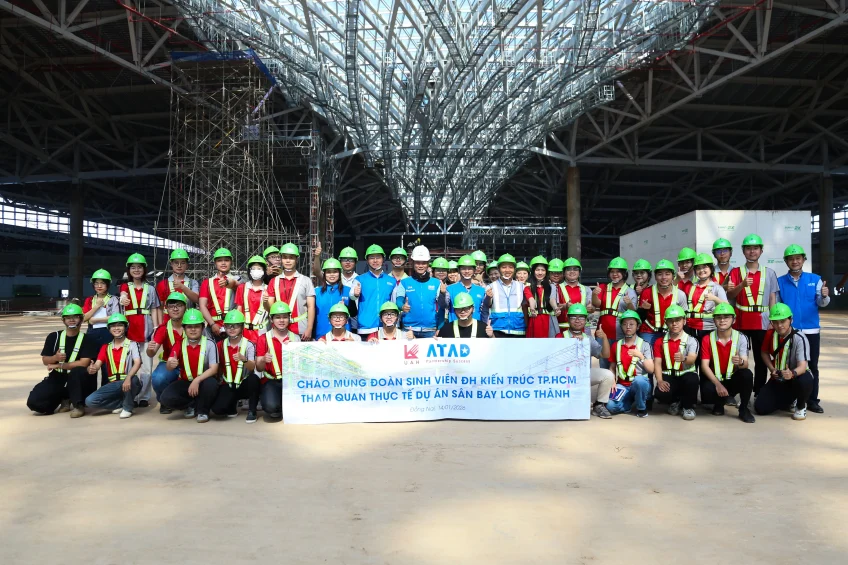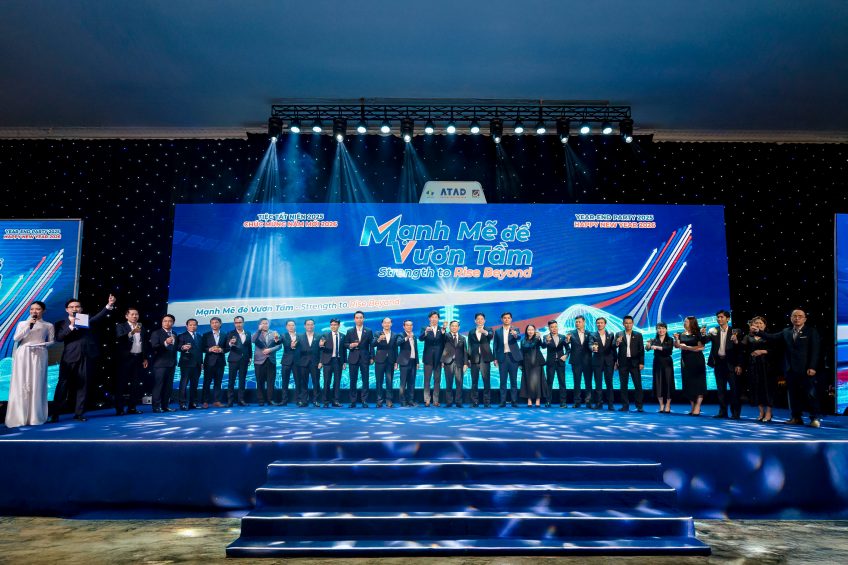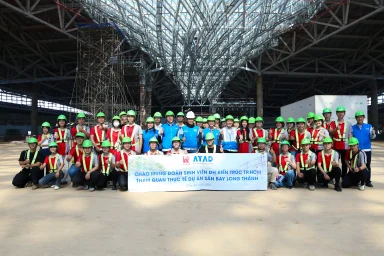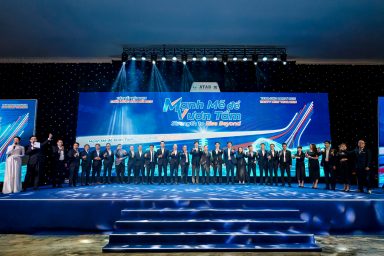In the construction sector, there are specific standards related to the quality of structures. The standards for high-quality production factories require adherence to the following 13 criteria:
Important design for constructing standard factory.
In the construction field, there are distinct quality regulations for structures. The standards for producing standard factory necessitate the following criteria:
1. Roof slope and skylights of standard factory.
According to the construction standards updated and issued in 2012, all construction items must meet technical requirements. Rooftops and skylights must ensure proper slope. This requirement is crucial for industrial factories to facilitate production.
The design of standard factory varies depending on the roofing materials used. Specifically, for roofs made of galvanized iron sheets, the slope must be between 15% to 20%. For tiles, the slope must achieve 50% to 60%. For flat roofs made of reinforced concrete, the slope should range from 5% to 8%.
2. Load capacity of foundations and bases of standard factory.
The foundation and base are the two most critical components of a structure, especially for tall factories. Standard factory typically feature robust foundations designed for high load capacities. According to regulation TCVN 2737: 1995, the surface level of the construction must be higher than the top of the foundation. In cases of weak construction soil, contingency plans must be implemented.
Standard factory require a solid technical approach to the underground structures, reinforcing materials for the foundation. For factories or underground constructions, additional attention needs to be given to structural integrity. Furthermore, factors like the density of constructions on the building site must also be considered.
3. Lighting levels of windows and doors in standard factory.
Light is a crucial element in the production process. Windows and doors in standard factory must ensure adequate illumination through well-designed window and door placements.
When designing standard factory windows, the height must not exceed 2.4 meters from the floor level. The glass portion of the windows must have a fixed frame. Additionally, the areas where glass is installed should be at a height greater than 2.4 meters from the floor. For doors, it is essential to ensure that there is a secure locking mechanism. The door system must be designed for mechanical opening and closing.
4. Load-bearing capacity of walls and partitions in standard factory
Walls and partitions are two components that help separate the interior of the standard factory from the external environment. For standard factory, walls and partitions must meet specific load-bearing capacity requirements. Depending on the characteristics, scale, and purpose of the standard factory, walls and partitions will be designed distinctly. There are three basic types of walls and partitions: load-bearing walls and partitions, self-supporting walls, and framed partitions.
With these standards and regulations for standard factory, several questions arise:
Are the construction costs for standard factory suitable for SMEs and foreign enterprises?
Is the construction time lengthy? Do companies have to spend a lot of time waiting for the project to be completed?
In response to these questions, using pre-built standard factory is a solution that many enterprises choose and prioritize.
5. Ventilation system in standard factory
By arranging air intake and exhaust openings, standard factory will feature sufficient ventilation and easy air circulation. The natural ventilation system helps eliminate stale air and refreshes the atmosphere within the standard factory. This is a mandatory requirement for any enterprise. There are two types of natural ventilation systems:
- Natural ventilation system for standard factory.
- Natural mechanical ventilation systems using air ducts.
6. Natural lighting system in standard factory
Windows, skylights, and open spaces are used to harness natural light in standard factory. Meanwhile, artificial lighting involves the use of electrical devices and other light-providing equipment.
It is necessary to combine these two light sources in production. The two light sources can replace each other in certain activities. This is aimed at saving energy and creating a good working environment for employees. This environmentally friendly trend is becoming increasingly popular.
7. Standard insulation in the standard factory.
Standard factory need to have reasonable partitioning and shielding, particularly in residential areas, as standard factory operations can affect the living conditions of nearby households. Additionally, thermal technical structures for equipment in standard factory must be designed to meet safety standards. This will help minimize the risk of fire and explosions, as well as reduce damage when such incidents occur. Similarly, electrical wiring in public buildings should be installed under the same principles.
8. Standard factory roofing.
Extended roofing systems are preferred for adjacent standard factory. This design helps protect the factory from weather impacts such as rain and sun.
9. Office area standards within the standard factory.
Combining offices and standard factory is a practical model applied across various production scales and industries. The office area is typically located separately from the storage/work area and uses tempered glass to create a spacious and airy environment, distinctly separating it from the standard factory. Generally, the office shares the security and protection systems with the storage area.
10. Fire prevention and protection system standards in factory.
Sprinkler fire suppression systems are commonly used in standard factory. Fire extinguishers and fire prevention information boards must be adequately equipped. Regular maintenance and inspection of fire prevention and protection equipment are necessary to ensure quality.
11. Insect screens in standard factory.
Insects can invade and affect the quality of goods and finished products. Windows, open ceilings, and skylights are potential entry points for insects into standard factory.
It is necessary to arrange mesh grids and insect screens to prevent the intrusion of insects and birds into the storage areas for habitation and nesting.
12. Security camera system standards
Depending on the quality standards of the standard factory, the security system may be integrated or your company may need to hire external services. It is advisable for your company to choose a standard factory that includes services, including security services, to minimize costs while adhering to standard factory design standards.
13. Wastewater treatment system.
The wastewater treatment system impacts the quality and brand value of the manufacturing company. Production water within the standard factory needs to be treated through three compartments before being discharged into the common wastewater drainage system.
The manhole and wastewater treatment tank should be placed in a reasonable position that does not affect other areas, particularly the production and goods storage zones.

















